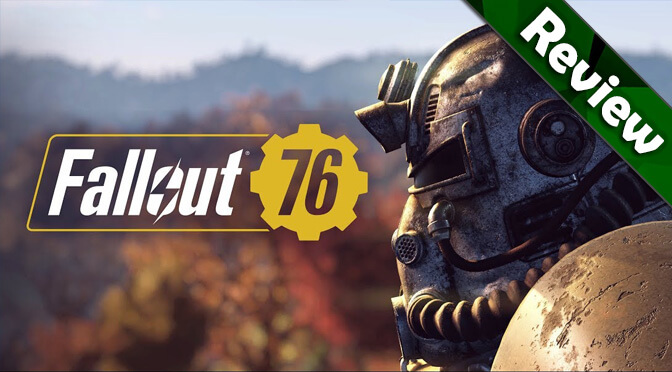By now you’ve likely seen Fallout 76’s overwhelmingly bad reception. Mainstream sites have roasted it, the internet has mocked it, and retailers have slashed the price of it. The oft-heard critical terms are glitchy, soulless, broken, cash-grab, early-access, and junk. All these and more hang over Fallout 76 like a condemning toxic cloud.
So is this game simply trash? Is it unworthy of any attention? Well, it’s certainly true that Fallout 76 is broken, buggy, and sometimes unplayable. If we gave review scores here I’d probably give Fallout 76 a 4 or 5 out of 10. It has potential, but it’s simply a malfunctioning game rife with incompetent programming and faulty systems.
This leaves me in a strange position. After 65+ hours of play, I’m still eager to leisurely explore, build my character, and craft ever-more-powerful gear. I clearly see the numerous and unacceptable issues, and yet I find myself quite captivated by this mostly-dead Appalachia open-world.
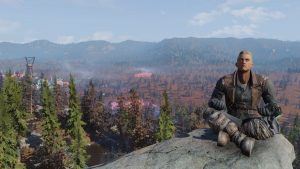
How can I enjoy Fallout 76? Am I insane? Just plain stupid? Bought-off by Bethesda? For those who dare to dive in, I humbly ask you to read this lengthy review in which I explain why Fallout 76 is both a technical disaster and a potentially powerful gameplay experience.
First, Let’s Roast: So Much Broken Stuff!
In case you haven’t read and/or watched how embarrassingly broken this game is, let me give you the highlights of the low points.
I’ve had about 14 game crashes, 20-plus server disconnects, 7 or 8 sudden maintenance shutdowns, and probably 30-plus lagging out episodes taking up to two minutes to resolve. The servers are less stable than the results of my last psychiatric evaluation (dual-burn!).
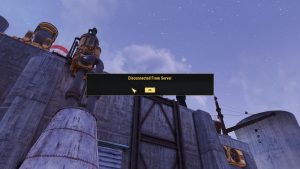
In the worst case when the game does disconnect, I might log back in and find I’ve lost the last five minutes or more of progress. Or maybe I won’t have lost anything. It seems to depend on the servers’ moods.
Particularly disturbing is how the quest log will sometimes fail to load. I’ll get in game and all my quests have simply vanished from the game world. Oh joy! Sometimes they’ll load in a few minutes. Other times I have to reconnect over and over and hope the game manages to scrounge up all that pesky quest data stuff.
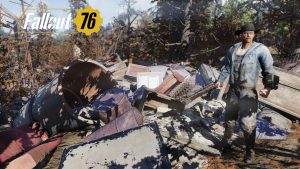
One particular quest was deleted from my quest log and reinstated about eight times over the course of a week or so, but finally the servers dug deep and registered my completion. As such, finishing a quest is often a momentous occasion not because of stellar writing (it’s not) or amazing rewards (they’re not). Rather, it’s kind of a miracle the game could momentarily function well enough to allow proper quest completion.
To make matters worse, the quest system itself uses a checkpoint system that fails to save your progress for many quests given but not begun. For instance, let’s say a robot at point A gives you a quest to go to point B. Despite the game adding this quest to your journal, if you quit your game without going to point B, the quest will be deleted as if you never began it. Idiocy is what this is.
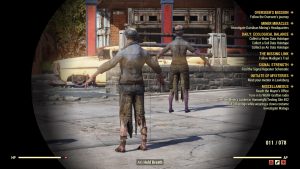
Then there’s the broken artificial intelligence. About half the time enemies will glitch out in numerous mystifying ways. You just never know if they’ll slide around in a “T-pose” or teleport back and forth or glitch out of world or die instantly or be naked or invisible. Who knows, maybe they’ll even behave properly!
And we mustn’t forget about the persistent and unacceptable lag. Remember the 1990s on dial-up internet with all its hitches and delays? Fallout 76 not only remembers but emulates this with very obnoxious momentary pauses between major actions like looting, shooting, and building. At best, it’s a split-second annoyance. At worst, it’s seconds on end of bandwidth befuddlement. Do you even network code, Bethesda bro!?
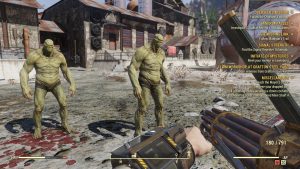
The framerate and performance is often quite fine…except when it’s totally dismal. In typical fashion, Fallout 76 can sometimes run very smoothly, but then the programming strangles itself with all those bits and pixels and things grind to a stuttering, halting mess. This is a seriously dysfunctional game engine.
On your end as a player, your attacks often won’t register and animations won’t play. When they do play, you’ll often shoot or swing right through enemies. If you thought previous Bethesda games had bad combat, wonky movement, and glitchy animations, Fallout 76 takes it to a new level. More like 76 times more glitches (ultra-burn!).
A more surface annoyance is how the game refuses to remember my username and password. And why can’t the keyboard/mouse and controller be swapped on the fly? This is 2018, isn’t it?
Oh, and the game can’t even exit properly. I usually get stuck at a frozen game screen when quitting, even when using Alt-F4. I then have to invisibly open the Task Manager, type “fa” to select the “Fallout 76” program and then use Ctrl-E to end the task. If you didn’t know how to do all that…then you’d probably have to restart your computer or something. Fun!
So are you excited to play Fallout 76 yet?! Did I mention not only is the game priced at $60 retail but there’s a micro-transaction shop full of outrageously over-priced stuff that should be in the game to begin with? Yoda voice: Greedy and incompetent, Bethesda is!
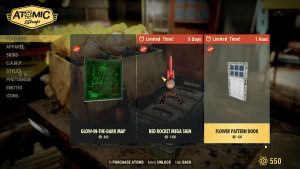
There’s my Fallout 76 roast. Disdainful derision for a flamboyantly flawed Fallout. If you are dead-set on hating Fallout 76, stop reading now and go in peace. Or read on and hopefully see why there may still be something worth salvaging in this massive mess.
What Player Would Enjoy This?!
Ok. That was a lot of broken stuff, wasn’t it? This is why, as a reviewer, I cannot recommend or endorse Fallout 76 in its current state. It’s truly one of the most broken triple-A games ever released. And yet, there is much here to enjoy and for a certain type of player.
This is key: Fallout 76 will only appeal to a more-limited range of players because it’s absolutely not the typical Bethesda RPG experience. I believe there is unique captivating joy buried within Fallout 76, but it requires defiant digging and self-determination.
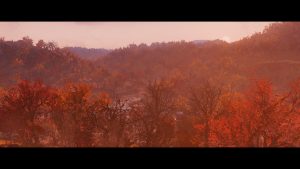
Let me explain by starting with what types of players won’t enjoy Fallout 76. Firstly, story-driven players won’t be satisfied. There’s only a bare-bones narrative told with holotapes (audio logs). There are no cutscenes or reveals or payoffs. There’s no characters to truly care about.
Action-focused players won’t be pleased. There’s almost no well-designed combat encounters. Most combat is awkward and clunky. There’s no sense of progression like in mission-based shooters, and the combat “Events” are mostly terrible (often broken) wave-based affairs.
Role-players won’t find much of a role to play since there’s not a single character to have a back-and-forth dialogue with. Shakespeare said “all the world’s a stage”, but Fallout 76 is more like an abandoned stage days after the last debauched performance, everyone gone and everything in disarray.
MMO-fans won’t find much to celebrate because Fallout 76 is the anti-social multiplayer game. Instead of advertising how you can get a job and become a hero or villain like many MMO-style games, Fallout 76’s “selling point” is how all those interesting interactions are as dead and gone as all the human NPCs.
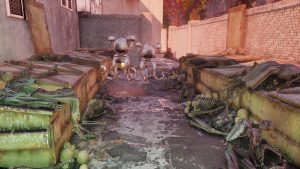
Speaking of everyone being dead, we finally get to the target audience of Fallout 76. The archeologists. The anthropologists. The wanderers. The nomads. The explorers of the unknown. The ones who are energized by solitude and find rest in their own private world.
Fallout 76 calls out to those who dream of having Disneyland all to themselves without the masses getting in their way. Put me in my own world. Let me explore. Let me discover. Let me escape the shackles of someone else’s story. Set me free from the madness of human interaction. This is, ironically, the mantra of Fallout 76.
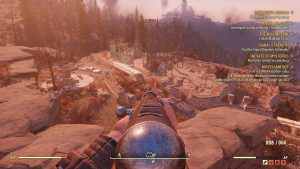
Now you probably think I’m nuttier than my last peanut butter and jelly sandwich…but stick with me here, I’m going somewhere delicious with all this.
Self-Amusement Park: My True Story
Let me tell you a true story. When I was about 12 I went to an amusement park near my home. The whole park was rented that day by my friend’s mom’s employer, so we had full access to the massive park with only a maybe 200 of us instead of the usual 2,000+.
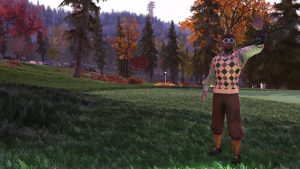
It was glorious. There were no lines and no crowded streets. I’d run from ride to ride with my friend. We’d go together a few times, then we’d split up and do what we wanted. It felt like this was my park. This was my world, created just for me to explore and enjoy.
To this day I remember this event as my best theme park visit ever. This experience was much better than all the other fancy super-crowded parks I’d go to in the subsequent years. Those other mega-parks were always chock full of people, reminding me I am but one of thousands, at the mercy of the crowds.
Here is where Fallout 76 resonates with me so much. Contrary to what I’ve said above, I don’t hate all human interaction. However, I want that interaction to be limited and optional and realistic. I don’t want to feel like I’m 1 of the 10,000 “Heroes” going on some quest-checklist to save the day like many online games.
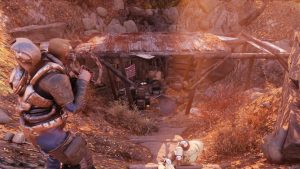
As a result, Fallout 76’s system is actually very enjoyable for me: there’s up to 24 players scattered around the massive world, which means I’m usually on my own. However, I always know other players are out there, released from my same Vault, exploring just like me. This setup gives an added realism and human connection to my exploration in a mostly non-distracting and beneficial way.
To put it another way, I can be alone but not lonely. Fallout 76 isn’t forcing me to team up and be social, and it’s not relegating me to an offline-only world populated by shallow NPCs. Just like my day at the amusement park, I have a big world to explore, but there’s others out there to create a contrast to my isolation. For me, this is a wonderful feeling.
Fallout 76’s Star: The Appalachia World Itself
Let’s get back to some specifics and describe the game world. Fallout 76 features not only the largest but also the most meticulously crafted game-space Bethesda has ever created. The attention to detail, little touches, and overall sense of place makes exploring the huge West Virginia Appalachia landscape a delight to me.
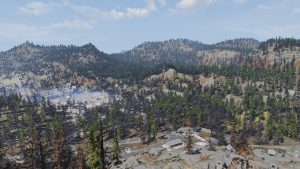
Truly the natural environments are stunning and impressive. This is a huge step up from anything Fallout 4 offered. Sadly, the man-made locations and buildings are mostly recycled assets from Fallout 4, and it’s almost all inferior to the creatively crafted natural artwork.
I cannot overstate how impressed I am with Fallout 76’s natural world full of truly unique biomes and locales. The lush green and bright red forests. The haunting mucky mires. The rocky moon-like crags and mining outposts. The otherworldly irradiated flora. It’s mesmerizing and graphically impressive!
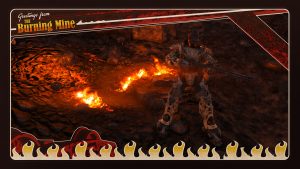
Most importantly, the world’s full of typical Fallout story tidbits. Husband and wife farmers about to lose everything suddenly hit it big only to have the world get nuked the next week. A bank robbery gone wrong made irrelevant by Armageddon. These stories get pieced together as you carefully find corpses and notes and so forth.
Thanks to the superb quality of the world itself, I find myself logging in and relaxing as I settle in to another session of wanderlust, being transported to what feels like a real place I can live and breathe in.
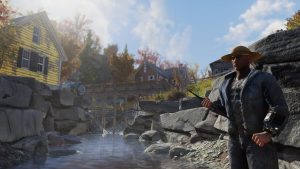
Sometimes I’ll just meander to a few locations and admire the views, takes some photos, and maybe find a note from a dead inhabitant. This leads us to what I’m calling my three pillars of Fallout 76.
My Three Pillars of Fallout 76: Wander, Discover, Examine
So we’ve already made it clear that this isn’t a game about story or characters. So what is it about? I personally view Fallout 76 as my solitary world to get lost in, and I find something very peaceful about walking through this vibrant world full of dead people and abandoned civilizations.
This simple process of journeying has kept me energized for a good 65+ hours, and I believe this is the fundamental gameplay loop of Fallout 76: wander, discover, examine. Let me explain each one.
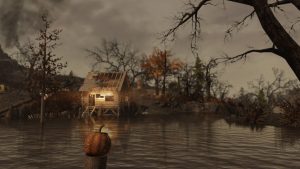
First, I wander. I argue this game is for the wanderers, the nomads, those who see an inherent value in simply going forward to find what’s there. This feeling of wanderlust has never been truer than in Fallout 76. The game’s very premise is thus: the world is destroyed…go out and study what’s happened…there’s nobody to help you…so forge your own path or die trying.
This mostly open-ended story structure is a tough pill to swallow for many fans because we’re used to Bethesda giving us all the major quest paths. This idea that we must blaze our own trail is what sets Fallout 76 apart, in an often misunderstood way.
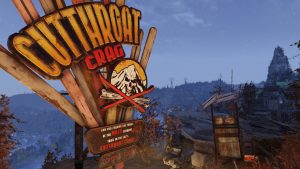
Moreover, many players will be sorely disappointed at how many “empty” locations there are. Many will ask, “What’s the point of yet another destroyed building to walk away from with only a backpack full of junk?” And yet, for us wanderers and explorers, the process of finding new places is, in itself, a worthwhile endeavor.
Now the second pillar: to discover. To discover is to live. This is the compelling truth that drives many of the world’s researchers, archeologists, and anthropologists. These are the ones that must discover, no matter what it may or may not lead to.
Some will ask what nonsense I’m talking about. It’s a big mental-shift to go from the quest-based discovery of prior games to this more free-form discovery of Fallout 76. Many players will hate it, but that indicates they perhaps haven’t discovered the joy of discovery!
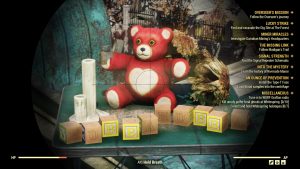
There’s so much to find and learn about in Fallout 76! The world is full of visually interesting locales and buildings and towns and bunkers! Uncovering a cabin hidden in the woods, now silent and empty; this is a joy to us archeologists! Let’s excavate the truth as best we can. We may never know exactly what happened, but we’ll try!
Coming across a scene of decaying bandit corpses, all at each other’s throats. Listening to a holotape stashed nearby that explains the philosophical disagreement that led to these deaths. Fallout 76 is so wonderfully full of this environmental storytelling, with dead bodies in curious positions and hints at how life failed to survive. The anthropologist in my eats all this up!
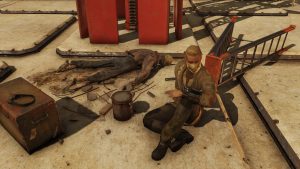
This brings us to the third pillar: examine. Let me tell you another story. I was in a summer program when I was a youth, going into the hills and digging up dirt to attempt to find old Native American arrowheads and other relics. We’d go there and dig and dig. Often we’d find nothing. Sometimes we’d find a few items that might be part of past civilizations. There was an urge to connect with the past and to find something hidden, which pushed us forward.
As many of us grow up, we lose this sense of wonder. We don’t have the patience for it perhaps. Fallout 76 is a rare game that asks us to slow down and study its world, much like how many of us remember playing and loving the game Myst back in the 1990s (another game that was criticized for being sort of empty, without much plot).
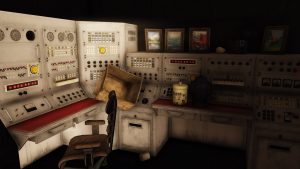
This is where many label Fallout 76 as wasted or worthless. The gamer who wants to blow through five quests in 30 minutes and unlock that special weapon and become the hero…they probably won’t understand why people would bother with Fallout 76. And that’s fair for them: this isn’t their type of game.
And yet for me, some of my best times in Fallout 76 have been my own personal journey that started with wanderlust, blossomed into discovery, and finished with contemplative examination of the past. This seemingly basic process has compelled me to continue playing Fallout 76, pushing through all the horrible bugs and issues, akin to pioneers trying to avoid freezing to death or being glitched out of existence by diseased programming.
Helvetia: A Case Study
Still unsure if Fallout 76 is for you? Consider this case study that encapsulates this wander, discover, and examine philosophy that I claim makes Fallout 76 so captivating to a select group of players.
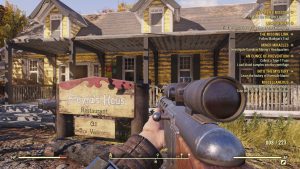
As I attentively stroll through the beautiful Appalachia countryside, I stumble upon a quaint little German/Swiss town, once a tourist destination but now lifeless apart from the roving ghouls. I’m filled with excitement because I know I’m going to discover and learn more about this world I love.
Questions fill my mind. Who lived here? What happened to this place? We’re they happy? What will I find as I go from house to house searching for answers? On the video-game side, I wonder if I’ll find a decent weapon blueprint or some higher level power armor.
As I explore the boundaries of the town and make a first sweep, I find no quest or higher purpose. Instead I find an art exhibit, a voting location gone haywire, and an old plundered inn. I spend maybe 20 minutes carefully sifting through the broken furniture and junk.
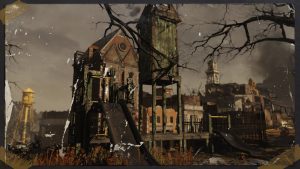
There’s some notes here and there, and I do find a holotape. I hunker down in a safe corner and listen. It gives me a rare glimpse into the actual lives of the now-very-dead townsfolk. I also find a big score of tasty honey from the derelict-but-quaint local honey shop. Great!
All this exploration is done mostly quietly and peacefully with just a little combat to clear out the ghouls. After about an hour I’ve “finished” this location. I leave with the satisfaction of knowing I’ve explored another piece of post-war West Virginia history. Thus ends my time with Helvetia.
Helvetia if this was Fallout 5: A Thought Experiment
Does my story bore you to death? Does my experience sound dreadfully dull? To some it will. These are the players who will likely curse Fallout 76 for, quite simply, not being Fallout 5. Part of the issue is it’s so easy to reimagine this town the way a fifth Fallout would have done it. For the sake of curiosity, let’s be creative and come up with our own Fallout 5 version of Helvetia.
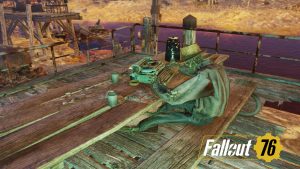
If this were Fallout 5, this location would have been a vibrant town full of NPCs. You’d probably meet the town leader who gives you a grand quest to reinstate the annual town celebration day, requiring you to decorate the town or sabotage the whole event.
There would have been a deranged-ghoul who gives you a quest to kill the local honey shop owner because he believes the honey is a mind-control agent. You’d be able to side with him or turn him in. You’d later run into his family on the other side of the map, telling you of the time he ate some irradiated honey and nearly went feral.
Perhaps there’d be an upbeat German/Swiss companion you could recruit, dressed in a colorful blend of that culture’s traditional clothing and scavenged parts. She’d talk in an accent of course and have a quest to find her lost loved ones.

Did I mention you’d be able to buy a player-home? You’d then decorate it with a bunch of fun German/Swiss trinkets as you complete quests for the townsfolk. By the end, they’d adopt you as their local town hero, possibly building a statue to you unless you choose to role-play a humble character.
The above structure is the well-established (some would say tired) Bethesda role-playing design, and this is what many wanted Fallout 76 to be. They didn’t want a Helvetia that’s empty and dead, and I can’t argue with their feelings. All this stuff would have been pretty fun no doubt, and there’s clearly a huge appetite for standard Bethesda/Fallout quests and role-playing.
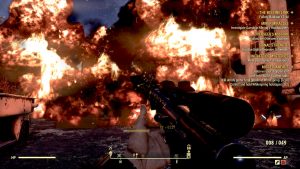
But here’s the bottom-line: Bethesda chose to not make a typical experience, so it’s not reasonable for me, as a reviewer, to expect it of Fallout 76. They made it clear from day one what this game would be. Maybe that was a poor choice, but as a reviewer, I cannot judge the game based on a different game I wish they would have made.
And let me go a step farther, at the risk of upsetting some people. In a way, exploring Helvetia was a fresher experience for me than if it was the usual Bethesda Fallout stuff. Going the dead and desolate route let me express my own inquisitiveness in a bolder way than if all the stories were right there in front of me in living NPC form.
Engaging with and helping NPCs has its joys of course, but in Fallout 76 the joy is in helping yourself to discover and learn about this world. I strongly believe piecing the fragments of this broken world together is enriching in its own way. That drive to know what used to be and how it all was lost is what makes Fallout 76 worthy to me.
A Tangent: We’ve Done this Before: Fallout Tactics
Speaking of people’s desire for Fallout 5, this isn’t the first time us Fallout fans have gotten something radically different than what we wanted. And ironically, this isn’t the first time us old-timers have played Fallout with friends.
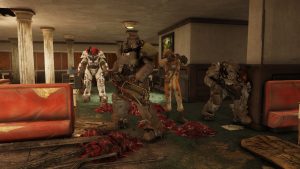
Way back in 2001, it had been 3 years since Fallout 2 took the CRPG world by storm, and we had all been waiting year after year for Fallout 3. And yet we didn’t get it. What we got was a weird multiplayer Fallout forgoing story and traditional RPG elements. Sound familiar? It would take a full 10 years to give us a proper Fallout 3 (although it was reimagined/mainstreamed by Bethesda).
For many, this Fallout Tactics was written off as a fake Fallout, and it certainly wasn’t what most fans wanted. Still, many of us accepted it for what it was and made the best out of it. I have fond memories of building my Tactics team and facing off against friends on our LAN.
Fast forward to today. We all want a proper Fallout 5, one that returns to form with the intelligence and wit and depth of Fallout 1, Fallout 2, and New Vegas. And yet here we are with a multiplayer Fallout forgoing story and traditional RPG elements. Sigh…
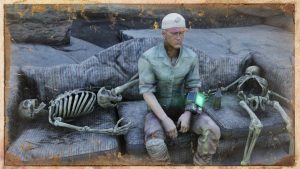
To add insult to injury, I fear it will take us another 10 years to once again get a proper Fallout. Bethesda is busy with their new game Starfield. And then there’s Elder Scrolls VI. That probably puts us out roughly 10 years…a distant dream at best.
Therefore, it’s no wonder why Fallout fans are upset. Fallout Tactics was the last PC release for a decade, and it’s possible Fallout 76 will also stand alone for countless years. At least Fallout Tactics was competently made…Fallout 76 is not.
Anyway, I think this comparison is fascinating, and it helps explain how crestfallen so many Fallout fans are. Even if Fallout 76 released perfectly stable and bug-free, nothing can replace a real Fallout 5 in the hearts of many. And that’s understandable.
Back to the Review: World Size and Nuke Farming
Let’s get back to some actual review stuff. First off, how much content is here? To give perspective, I reached level 40 after 45 hours of playtime, and at this point I’d explored most of the left side of the map with maybe 55% of locations remaining. The Challenge tracker put my quest and event completion around 33%. So this is a big game world.
In regard to nukes, the first one I saw was at 25 hours, but it was way far away from me. At 50 hours I was at a location that got nuked, and I engaged in cooperative high-level play with a bunch of level 100+ characters. I got annihilated by the end-game enemies, but it was fun to get a glimpse of what high-level players do in the end-game.
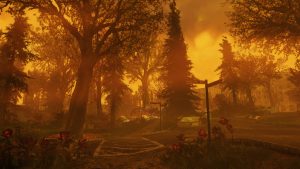
I’m now level 60 or so at 65 hours of playtime, and I’ve engaged in quite a few end-game nuke farming affairs. Too bad the framerate and game performance tanks when you’ve got a nuke going off and 10+ players all crammed in a small zone. Maybe after another 20 patches…
One of the big draws is late-game legendary item farming (and high-end crafting), and I do think it’s pretty fun to try to farm a great new weapon to rework your character build around.
Character Builds and Perk Cards
Speaking of character builds, one of the few design decisions that has been mostly praised is the perk card system. Gone is the static character builds of the past that lock you into one path. Now you slowly collect new perk cards you can freely equip and unequip at your leisure.
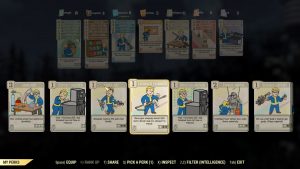
Every player level lets you pick a S.P.E.C.I.A.L. attribute (up to level 50), which allows for more (or upgraded) perk cards to be equipped to the attribute you select. It’s good fun deciding if you want a super-Strong or super-Lucky or very Agile or Perceptive character.
It’s also a real pleasure to slowly open new packs of cards and decide how to build your character. Do you focus on shotguns, survival, or something supremely wacky? There’s some really fun cards and returning favorite features like the Mysterious Stranger.
Even though at first there’s some essential cards (carry weight!), once you reach level 30 or so you have quite a large variety of build options open up to you. And once you reach level 50 and beyond, the depth of the character system fully reveals itself.
Crafting and Base Building
Fallout 76’s crafting is basically the same as Fallout 4. You can disassemble weapons and armor to learn how to craft various parts. It’s fun to slowly accumulate crafting knowledge, letting you make some incredibly powerful guns after dozens of hours of hard work.
The base building system is very limited, only allowing one mobile C.A.M.P. location. When you first start, you’re unable to build any of the cool stuff, and it can take 50+ hours or more to unlock even a fraction of the best building parts.
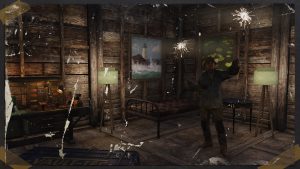
There’s certainly a joy to occasionally taking time to build up your mobile base, saving chunks as Blueprints for easy reassembly as you move throughout the wasteland. Many players will likely miss the permanent Settlements and player houses of past Fallout games, but this mobile, more-limited base building fits well with Fallout 76 lore.
Workshops: A Great Idea Poorly Implemented
One of Fallout 76’s new ideas is the workshop system. All over the map you’ll find sites you can “claim” to make your own, such as junkyards and farms. Then you can build extractor units to harvest various resources over time. Other players can attempt to steal your workshop from you, making them “wanted” (Fallout 76’s penalty system), and you can choose to fight it out.
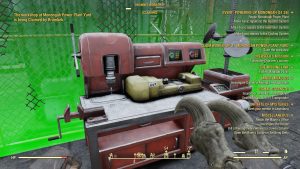
The system is great in theory. The idea of claiming land as your own, harvesting certain resources like crystal or gold or aluminum, and defending it from attackers is fantastic.
The problem is in how unstable and fleeting Fallout 76’s world is. If you get disconnected or quit, all your workshop progress is erased since it’s only stored for that specific game session. So it’s not like you can slowly build up workshops over time. Overall, workshops are a wasted opportunity that end up being an occasional diversion instead of a robust, meaningful game system.
Terrible Non-Collectibles
Let me briefly note that Fallout 76 changes all the permanent-buff collectibles of past Fallout games into short-period buffs usually lasting an hour. This is a huge letdown since it renders Bobbleheads and Magazines mostly inconsequential. Nobody is going to alter their gameplay because they get 30% easier locking for an hour after using a certain Bobblehead.
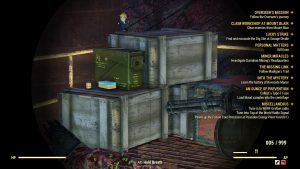
This change also means none of these are true collectibles anymore. They respawn over and over and you can’t collect or display them like so many fans (myself included) have loved doing in prior Fallout games. Now I find myself vendoring Bobbleheads or using them instantly because who cares…
It’s an unfortunate change that takes something so fun and rewarding and makes it mundane and lame. It would have been great fun tracking these down with friends, sharing where we found them, and showing them off at our C.A.M.P.s. So this is a fail, but perhaps they’ll patch the system down the road.
Holotapes, Notes, and Story Quests
I previously mentioned how Fallout 76 is full of various lore tidbits, fed mostly through holotapes and notes. For the record, I’ve found over 100 holotapes, roughly 150 notes, and about 20 treasure maps.
On the quest side, I’ve completed over 10 main quests, about 12 side quests, and a slew of unsorted quests. So there is questing to be had…it’s just limited…and without much cohesion.
Enemy Diversity and Challenge
It’s unfortunate that Fallout 76 reuses so much of Fallout 4’s enemies and assets. Still, it’s nice to see a wide variety of new and interesting creatures included. There’s some really creative and funny takes on irradiated wildlife in Fallout 76. However, the majority of the time is spent fighting the four or five main enemy types, which gets repetitive very quickly.
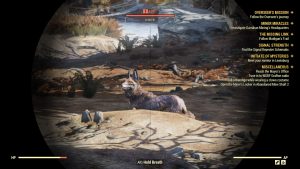
The game challenge overall is as one would expect from a Bethesda title: easy. Tough enemies do spawn, but I mostly died because of the terrible or broken AI, glitches, or other technical issues. But nobody really plays Fallout for the combat challenge I would imagine.
Sound Design, Music, and Radio Stations
Fallout 76’s sounds are mostly rehashes from Fallout 4. There’s a few nice additions with fantastic environmental sound effects in places. Bubbling, steaming, grinding, and chirping world sounds create a nice ambient backdrop for exploration.
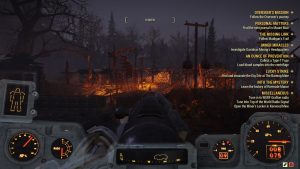
The biggest standout is the absolutely phenomenal instrumental soundtrack by Inon Zur. He’s been doing the Fallout music ever since Fallout Tactics interestingly enough, and I think Fallout 76 is his best work yet. It’s truly brilliant, creating such a warm yet despairing mood. So good!
There are only two music radio stations in Fallout 76: classical and the standard early to mid 1900s tunes. It’s all fine, even if we’ve been hearing some of these songs for years now in prior games.
In case you were wondering, Atom Bomb Baby is just as glorious in the Appalachia as it was in Fallout 4. Truly an epic song!
Online Events: They’re Bad
Fallout 76 includes a couple types of “online” quests, and both are pretty bad. There’s “Events” and “Daily Quests” that repeat on timers. Sadly each of these quest types tend to be very generic, very tedious, and very fetch-questy.
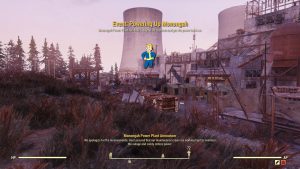
Most players will probably attempt these quests once and realize how unfulfilling they are. Overall, Bethesda did a terrible job creating fun and engaging repeatable quests…not surprising really.
Photo Mode and Photos as Loading Screens!
Fallout 76 has a fantastic photo mode that’s super-fun to use as a sort of selfie-documentary, visually recounting your personal game journey. There’s so many wonderful and wild places for photo opportunities! And remember how I said this game is for anthropologists and explorers and archeologists and stuff? They love to take photos, trust me on this one!
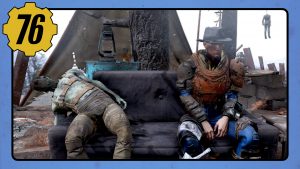
I’ve personally taken over 80 photos during my 65+ hours exploring West Virginia, and it’s a trip down memory lane to go into the Photo Gallery and see the way my character has visually and geographically progressed throughout the game. Good times.
Not only is there a photo mode, but Fallout 76 uses your photos as loading screen artwork. This may sound minor, but it’s pretty much the best feature ever invented. Too much? Ok, but using your own photos as loading screens is the best feature you never knew you needed.
Even if Fallout 76 goes down is history as utterly hated, the one thing it’ll always have is your photos as loading screens! They’ll never be able to take that away from you, Fallout 76! Never!
Couldn’t We Have Had a Few NPCs?
I agree with all the criticism that says Fallout 76 did NOT need to have every single human/ghoul NPC be dead. Bethesda could definitely have included a handful of NPCs here and there and still delivered the core Fallout 76 experience. Some traditional Fallout quests and NPCs and dialogue wouldn’t have ruined the game.
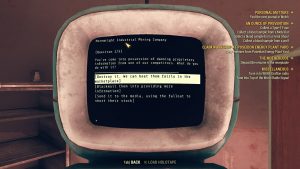
Therefore, it’s easy to look at the game and feel like Bethesda was just lazy and didn’t want to do all the hard work of writing dialogue and quests and choices and consequences. That’s logical criticism, but Bethesda claims this is how they wanted to make the game. No dialogue. No proper NPCs. Fair enough I guess…but there’s still plenty of other ways they could have added more quality quests.
Fake Conclusion: The Fallout Future
The future for Fallout 76 is as bright or dark as Bethesda wants it to be. There’s great potential to fix all the bugs and lag and issues and to deliver quality (free) content for months to come. There’s also the unfortunate possibility Bethesda won’t ever stabilize the game, will add even more egregious cash-grabs (loot boxes), and charge big money for lame expansions in the future.
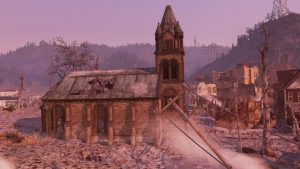
I honestly have very little faith in Bethesda. I don’t trust them at all. Fallout 76 could get turned around like Final Fantasy XIV or The Division, but will that happen? Final Fantasy XIV took three years with a full relaunch, and The Division took a year and a half of extreme patching to make it into a truly solid, deep, and expansive game.
Does Bethesda have the will, the competency, and the moral compass to do what’s right and needed? Only time will tell.
Proper Conclusion: Semi-Wasted, Semi-Wonderful
As stated at the very start, Fallout 76 is often broken, usually buggy, and sometimes unplayable. And yet it’s also one of the most beautiful and detailed post-apocalyptic open-game-worlds ever created. Appalachia is the star: so exquisitely detailed and captivating. And when the game functions there’s dozens upon dozens of hours of brilliant exploration to be had.
Despite the enthralling exploration, the game definitely lacks quests, a sense of permanence, and a traditional video game plot. The cooperative play can be lots of fun, whether it’s low-level basic exploration or end-game nuke runs with a crew of 10+ other highly-geared Power Armor players. And yet stability issues are the greatest threat to your fun.
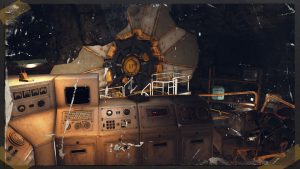
Ultimately, there’s no way a serious review can overlook all the faults, but sometimes there’s joy to be had even in the most busted of video games. Just be aware that only a certain type of player will enjoy Fallout 76’s bleak, mostly-dead world of self-guided gameplay.
If my review piques your interest, then the safe bet is to buy Fallout 76 for cheap…in a year…if they’ve fixed everything…and over time you may come to appreciate the joy of wandering, discovering, and examining Fallout 76’s strange and creative Appalachia open-world.
At the very least, let’s agree using your photos on the loading screens is genius. So Fallout 76 isn’t all bad, right?
![]()
- Vibrant, huge open-world
- Beautiful scenic views
- Captivating exploration
- Piecing together the lore
- Character build diversity
- Perk card flexibility
- Coop when you want to
- Base building and expansion
- Crafting and upgrading gear
- Atmospheric soundtrack
- Fallout vibe when working
![]()
- Server instability
- Serious latency issues
- So many bugs and glitches
- Quest tracker issues
- Lack of NPCs, dialogue
- Clunky, awkward combat
- Lame events and daily quests
- Cumbersome menus
- Recycled Fallout 4 assets
- Ugly up-close details
- Insulting micro-transactions
Playtime: 65 hours total. Nick’s explored about 75% of the map, having almost completed the final quests. He’s engaged in end-game content, built many homes, and crafted hundreds of weapons and armor. He’s eager to finish this review and get back to living the life Appalachia!
Computer Specs: Windows 10 64-bit computer using an Intel i7-3930k CPU, 32GB of memory, and a nVidia GTX 980 Ti graphics card.
Also read the Fallout 76 PC Performance Analysis.
Nick’s been a PC gamer for over 20 years, having grown up on first-person shooter games (he’s very proud of his Quake 2 tournament trophy). Nick also loves deep, engrossing role-playing games, and he’s also more famously known as Brumbek, the creator of Static Mesh Improvement Mod for Skyrim. Nick believes the essence of enjoyment is to play and ponder video games.
Contact: Email

